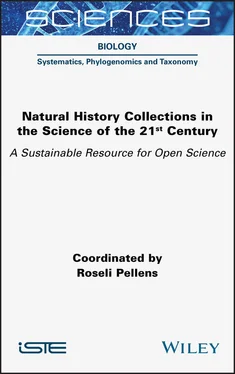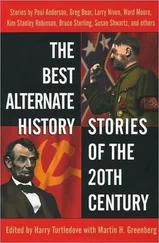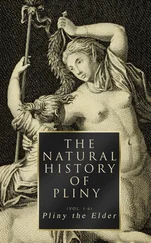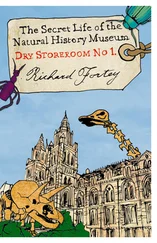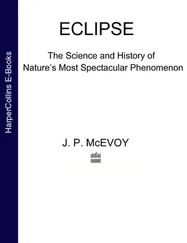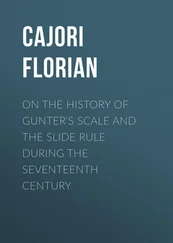1 ...6 7 8 10 11 12 ...23 Barnosky, A.D., Hadly, E.A., Bascompte, J., Berlow, E.L., Brown, J.H., Fortelius, M., Getz, W.M., Harte, J., Hastings, A., Marquet, P.A., Martinez, N.D., Mooers, A., Roopnarine, P., Vermeij, G., Williams, J.W., Gillespie, R., Kitzes, J., Marshall, C., Matzke, N., Mindell, D.P., Revilla, E., Smith, A.B. (2012). Approaching a state shift in Earth’s biosphere. Nature , 486 (7401), 52–58 [Online]. Available at: https://doi.org/10.1038/nature11018.
Carlson, C.J. (2020). From PREDICT to prevention, one pandemic later. The Lancet [Online] . Available at: https://doi.org/10.1016/S2666-5247(20)30002-1.
Ceballos, G., Ehrlich, P.R., Barnosky, A.D., García, A., Pringle, R.M., Palmer, T.M. (2015). Accelerated modern human-induced species losses: Entering the sixth mass extinction. Science Advances , 1:e1400253, 1–5.
Díaz, S., Zafra-Calvo, N., Purvis, A., Verburg, P.H., Obura, D., Leadley, P., Chaplin-Kramer, R., De Meester, L., Dulloo, E., Martín-López, B., Shaw, M.R., Visconti, P., Broadgate, W., Bruford, M.W., Burgess, N.D., Cavender-Bares, J., DeClerck, F., Fernández-Palacios, J.M., Garibaldi, L.A., Hill, S.L.L., Isbell, F., Khoury, C.K., Krug, C.B., Liu, J., Maron, M., McGowan, P.J.K., Pereira, H.M., Reyes-García, V., Rocha, J., Rondinini, C., Shannon, L., Shin, Y.J., Snelgrove, P.V.R., Spehn, E.M., Strassburg, B., Subramanian, S.M., Tewksbury, J.J., Watson, J.E.M., Zanne, A.E. (2020). Set ambitious goals for biodiversity and sustainability. Science , 370(6515), 411–413.
Gorenflo, L.J., Romaine, S., Mittermeier, R.A., Walker-Painemilla, K. (2012). Co-occurrence of linguistic and biological diversity in biodiversity hotspots and high biodiversity wilderness areas . Proceedings of the National Academy of Sciences of the United States of America , 109(21), 8032–8037.
Hoekstra, A.Y. and Wiedmann, T.O. (2014). Humanity’s unsustainable environmental footprint. Science , 344, 1114–1117.
Hoekstra, A.Y., Mekonnen, M.M., Chapagain, A.K., Mathews, R.E., Richter, B.D. (2012). Global monthly water scarcity: Blue water footprints versus blue water availability. PLoS One , 7(2) e32688.
IPBES (2019). Summary for policymakers of the global assessment report on bio-diversity and ecosystem services. Report, Intergovernmental Science-Policy Platform on Biodiversity and Ecosystem Services, Bonn [Online]. Available at: https://doi.org/10.5281/zenodo.3553579.
IPCC (2018). Summary for policymakers . In Global Warming of 1.5 °C , Masson-Delmotte, V., Zhai, P., Pörtner, H.-O., Roberts, D., Skea, J., Shukla, P.R., Pirani, A., Moufouma-Okia, W., Péan, C., Pidcock, R. et al . (eds). World Meteorological Organization, Geneva.
Rounsevell, M.D.A., Harfoot, M., Harrison, P.A., Newbold, T., Gregory, R.D., Mace, G.M. (2020). A biodiversity target based on species extinctions. Science , 368(6496), 1193–1195 [Online]. Available at: https://doi.org/10.1126/science.aba6592.
Steffen, W., Richardson, K., Rockström, J., Cornell, S.E., Fetzer, I., Bennett, E.M., Biggs, R., Carpenter, S.R., De Vries, W., De Wit, C.A., Folke, C., Gerten, D., Heinke, J., Mace, G.M., Persson, L.M., Ramanathan, V., Reyers, B., Sörlin, S. (2015). Planetary boundaries: Guiding human development on a changing planet. Science , 347(6223), 1–10.
Suarez, A.V. and Tsutsui, N.D. (2004). The value of museum collections for research and society. BioScience , 54(1), 66–74 [Online]. Available at: https://doi.org/10.1641/0006-3568(2004)054[0066:TVOMCF]2.0.CO;2.
1 1 In France, law no. 2016–1087, known as “For the reconquest of biodiversity, nature and landscapes”, as well as the creation of the Office français pour la biodiversité (French Office for Biodiversity) are direct consequences of the ratification of the Nagoya Protocol, the third main objective of the Convention on Biological Diversity, which refers to access to genetic resources and fair and equitable sharing of benefits arising from their use.
2
Natural History Collections: An Ancient Concept in a Present and Future Perspective
Philippe GRANDCOLAS
ISYEB – CNRS, Muséum national d’Histoire naturelle, Sorbonne Université, École Pratique des Hautes Études, Université des Antilles, Paris, France
Natural history collections must be considered from an innovative perspective of an open science, which adds to the traditional uses (taxonomies, identifications, etc.), with all the possible new uses linked to current problems (effects of global change, research of new natural resources and sustainable development, notably with bioinspiration, etc.). These new uses are possible because of the material status of collections that contain available specimens and their possible links with digital information. New practices that only generate virtual data (citizen science, metagenomics) that is analogous to collection data must be reconnected with specimens. The concern about biases in collection building, while understandable, does not represent a serious problem if one understands that any question requires ad hoc sampling and it is therefore important to “resample” collections to answer a question. Thus, it is therefore essential that the collections last and continue to increase in size, notably via the innumerable scientific studies that should make their data accessible as part of an open science policy.
The role and importance of natural history collections are considered differently by different people. With their ancient origins, collections may seem obsolete to some, as if they were a testimony to another era when our natural history knowledge and tools were still insufficient and required intense descriptive activity and physical storage. And yet, in the context of global change, collections constitute a formidable archive of abused and endangered biodiversity. Indeed, society and very diverse parts of the scientific community are beginning to understand that collections not only have an undeniable utility, but even have a major role to play in today’s and tomorrow’s world (Suarez and Tsutsui 2004). At this critical juncture, these somewhat contradictory views of collections can blur their image and prevent us from assigning them an appropriate strategic trajectory.
It is therefore important to renew but also to clarify the way we consider collections. In such a context, we must not deny the reasons for their foundations and their current uses, which are extremely numerous (Funk 2004, 2018). We must therefore first try to understand their original raison d’être , their relationship with the classifications of living organisms and their evolution, with its constraints and assets. But it is also necessary to extricate ourselves from our habits and try to take a fresh look at them in order to integrate them in a world in environmental and technological revolution in the most profitable way. It is thus important to situate them in a general context where other types of collections – genetic, molecular, digital, etc. – or other modalities of biodiversity data acquisition – metagenomics, citizen sciences – are emerging.
With this approach, it is also important to be aware of the diversity of collections, encouraging interactions between biological and non-biological collections (mineralogy, human artifacts, etc.). This aspect is rarely mentioned and collections are almost always considered only in relation to biological specimens (Meineke et al . 2018). However, major concepts are common or analogous between all these collections, such as species or classification, representation of variability, availability, and so on. I will not systematically develop these analogies in the rest of my reflection, but I encourage the reader to take them into account in their approach.
Читать дальше
